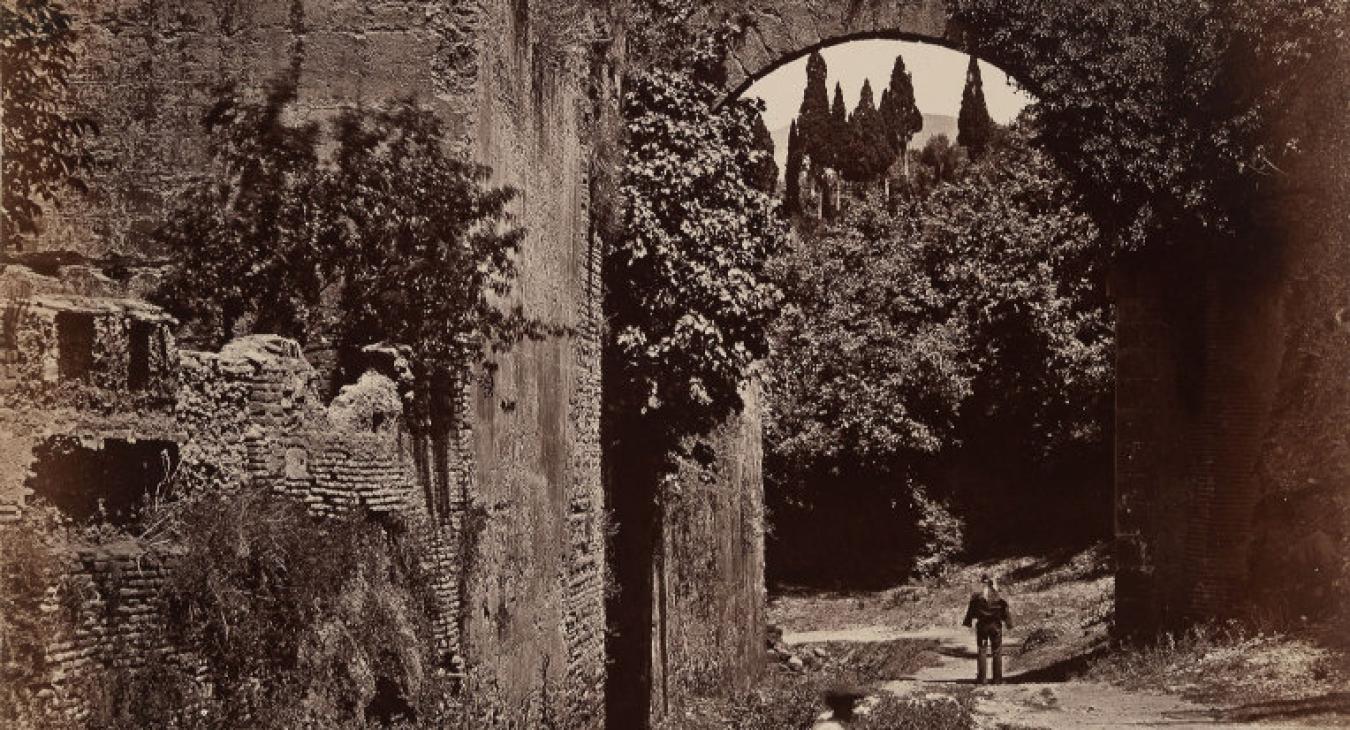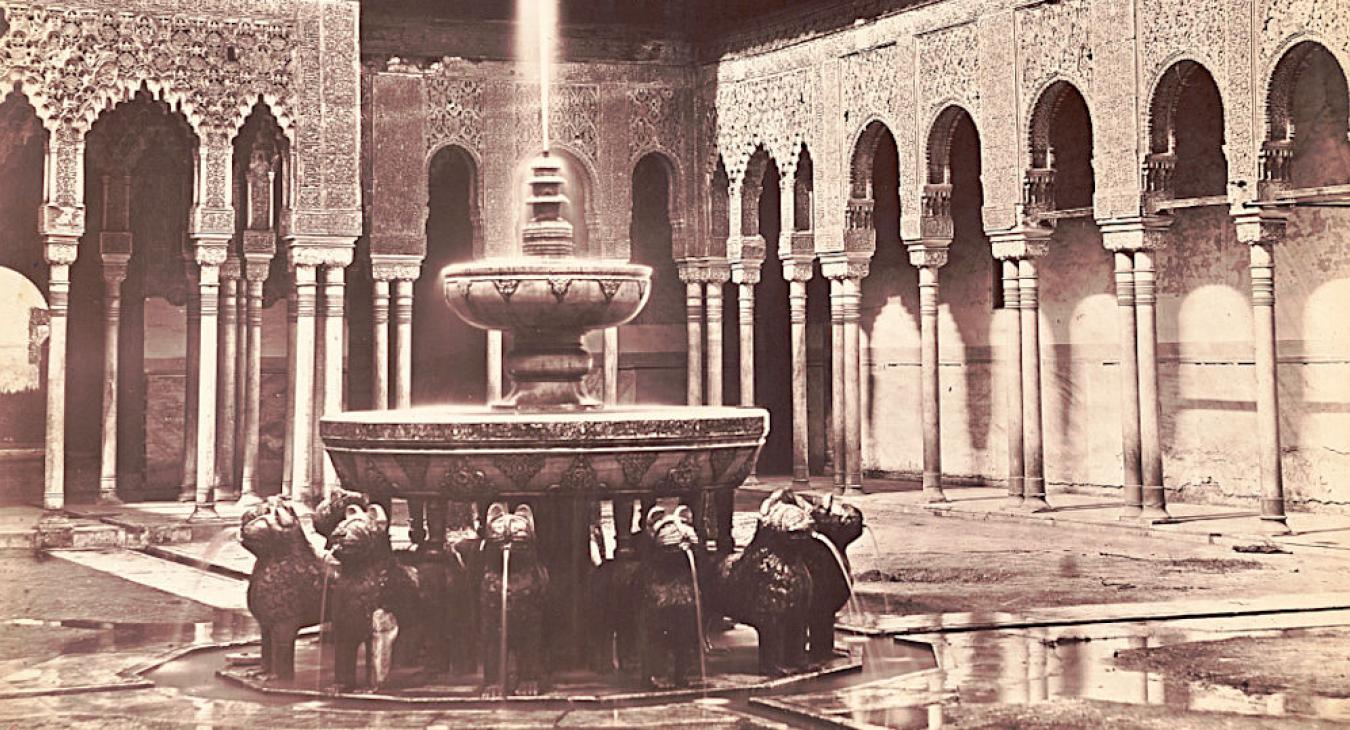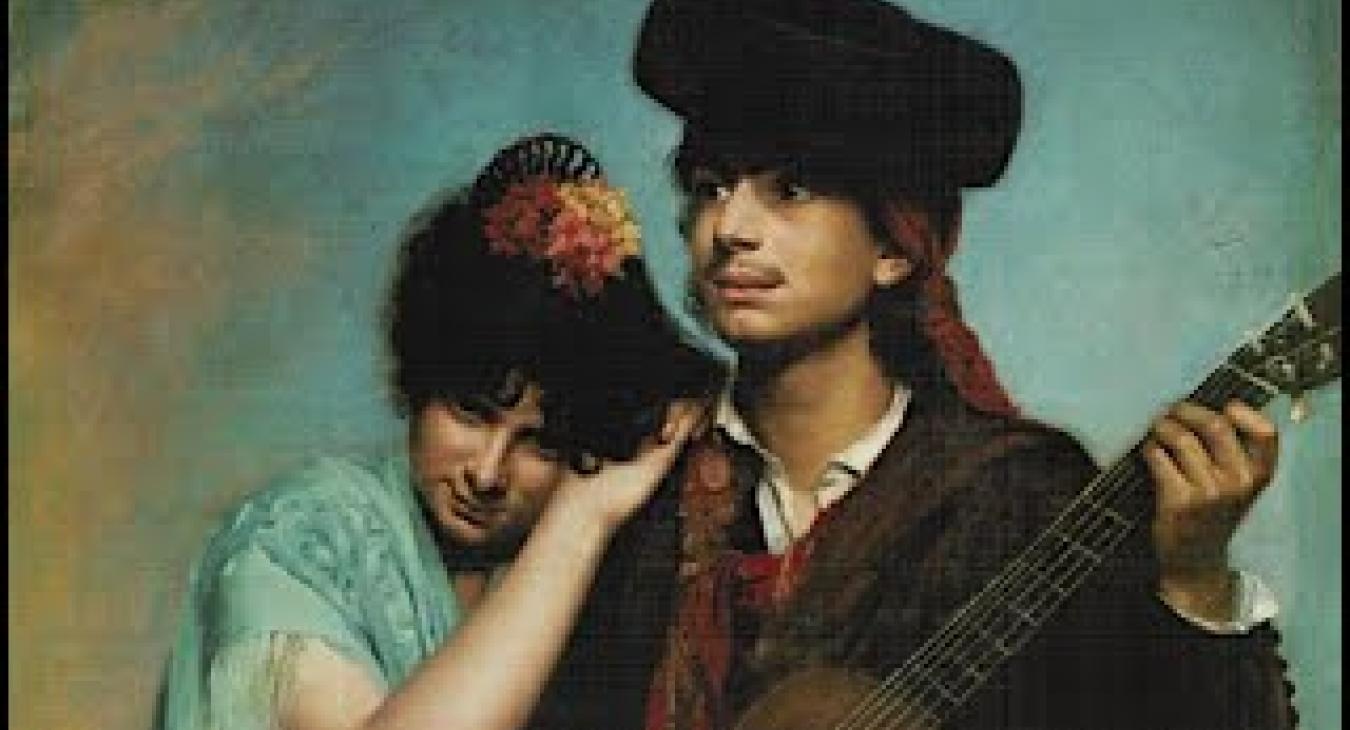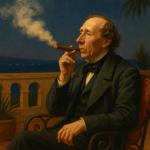Hans Christian Andersen was so captivated by the city of Granada that he likened it to Rome in his travel writings:
Granada has, like Rome, been to me one of the most interesting cities in the world, a place where I believed I could take root […]
Several of his 'sensual' poems refer to his stay in Granada. In his diary, he writes on October 6th, 1862:
[Colonel Larramendi] led us to an establishment where there was a beautiful daughter, who treated us with sugar water and cake, being most gracious. My blood was greatly stirred, and in the lovely moonlight, I wrote a couple of poems and did not retire to bed until midnight.
Alhambra
Hans Christian Andersen and his travel companion, Jonas Collin, stayed in Granada from the 6th to the 21st of October, 1862. Initially, they resided at a hotel near the new Alameda, in the modern part of Granada. However, finding it burdensome for their travel budget, they later moved to a modest boarding house at the foot of the Moorish palace, Alhambra. This place, known as Fonda de los Siete Suelos, was situated right beside the tower that lent its name to the boarding house, La Torre de los Siete Suelos. In a photograph taken in 1860, only the tower is visible; the boarding house must have been just around the other side.
Andersen and the famous English photographer
Andersen visits the Alhambra several times. On his last visit to the palace, he is overtaken by a group of festively dressed gypsies who are also on their way up to the Alhambra. When he arrives, parts of the palace are closed. Andersen writes in his travel book:
The Court of the Lions and the Hall of the Two Sisters were photographed by order of Her Majesty the Queen by a famous English photographer; he was fully at work, and no one dared to enter, as it would cause a disturbance. We looked in from the open arch; the entire gypsy family, whom I had recently seen arriving, had been called up here to serve as living figures in the pictures.
Andersen describes the scene as follows:
They stood and lay grouped in the courtyard; a couple of the smallest children were entirely naked, two young girls, with dahlias in their hair, stood in dancing poses holding castanets; an old, exceedingly ugly gypsy, with long gray hair, leaned against one of the slender marble columns and played a zambomba, a type of rumble pot; a plump, still quite comely woman, with a hitched-up, colorful skirt, played the tambourine.
And he adds:
The image was completed in an instant, in a manner that I cannot adequately describe. Perhaps I shall see it again, but it was indeed the last time I beheld the Alhambra.
Perhaps I shall see it again
Andersen mentions 'a famous English photographer' in his description. When I read this, my first thought was that such a renowned photographer's images might still be accessible today. It turned out I was right! In the age of search engines it's possible to trace the photographer who, on a Thursday afternoon, October 16, 1862, took a series of wet-plate photographs in the Court of the Lions at the Alhambra. His name was Charles Clifford, an English photographer who lived in Madrid. From 1850 until his death in January 1863 (just four months later), he traveled extensively throughout Spain, documenting buildings, landscapes, and people. These photographs are also available in various online archives.
A Historical Snapshot
The photos were taken in the Court of the Lions, el Patio de Los Leones. This is evident from the characteristic double columns and the colonnade in the background. From the sunlight and the shadows cast by the arches, one can also quite accurately determine that the photos were taken in the upper eastern corner.
Please try reading Andersen's description once more and compare it with the picture. There is no doubt that it depicts the same group. The 'exceedingly ugly gypsy' with the rumbling pot has now seated himself and is holding a guitar instead. The two young women are still in a dancing pose with castanets, although the castanets are not visible in the picture, possibly because they are moving too much. The children are likely playing out in the courtyard.
We know that Clifford took several different pictures of the same group in various positions, and only two have survived the test of time. These pictures might have been taken just minutes before or after Andersen's description. But this is the closest we get to a historical snapshot! We actually also know who the 'exceedingly ugly gypsy' is. But that is another story!
Clifford's Photographs and The Others
Charles Clifford documented the Alhambra at the behest of the Spanish Queen, Queen Isabella II. The Queen's visit to Granada in 1862 coincided with Andersen's travels (hence the skyrocketing hotel prices). However, Charles Clifford had previously taken pictures of the Alhambra. So why did he do it again, and why did he include gypsies in the photograph? There have been lengthy articles written on this topic. In the latter half of the 19th century, Spain was dealing politically with the loss of its colonies in Latin America. At the same time, the country was asserting itself as a colonial power in North Africa. Some believe that associating gypsies with the Moors (from North Africa) and placing them in a photo of the Moors' lost palace symbolizes the dominance of 'white' Catholic Spain. The true Spaniards and The Others.
The Early Flamenco
There is undoubtedly some truth to that. However, at the same time, there was also a significant public interest in the exotic gypsy culture. Especially artists were in search of a popular cultural essence or identity during these years. Renowned composers, both within and outside of Spain, were seeking inspiration in folk music traditions, just as a number of artists from across Europe were creating picturesque paintings of both gypsies and the common people. It was also during this period that the first public flamenco performances took place. We will soon return to that as well!









